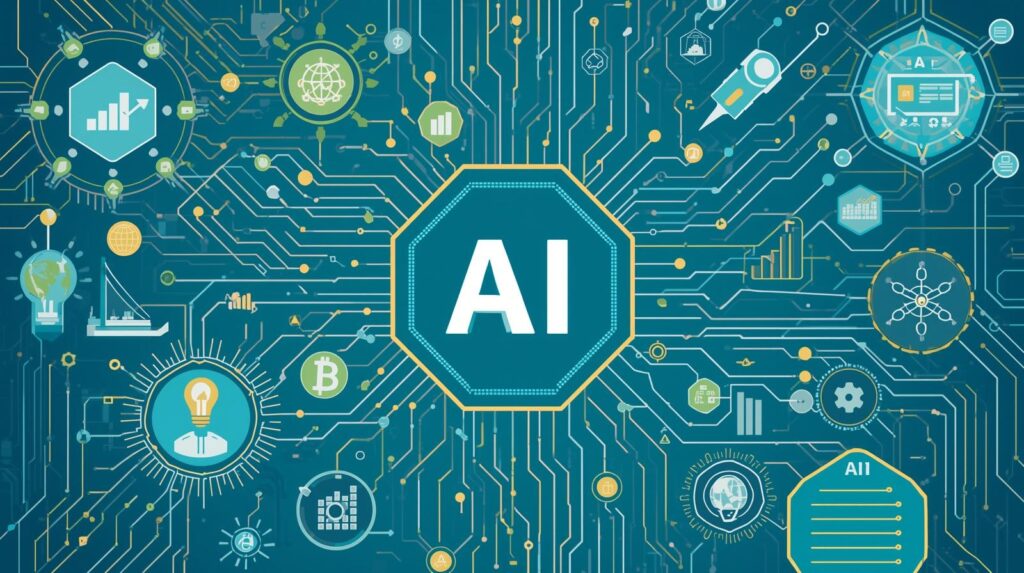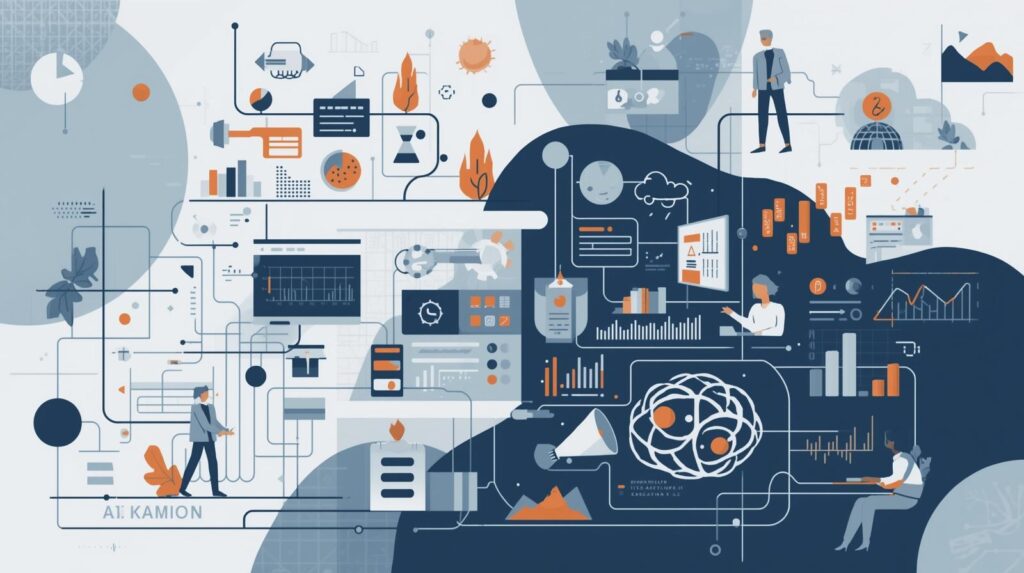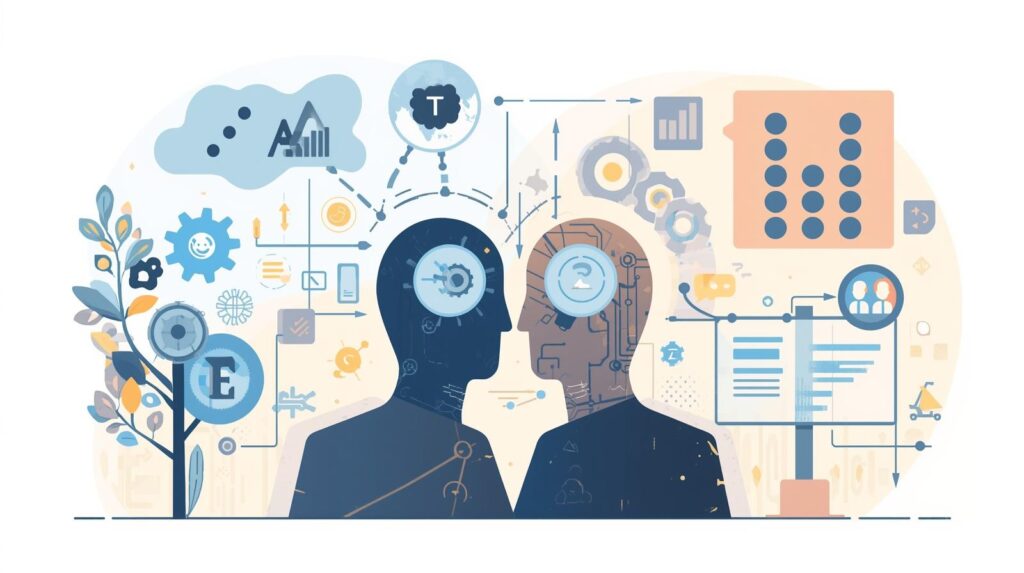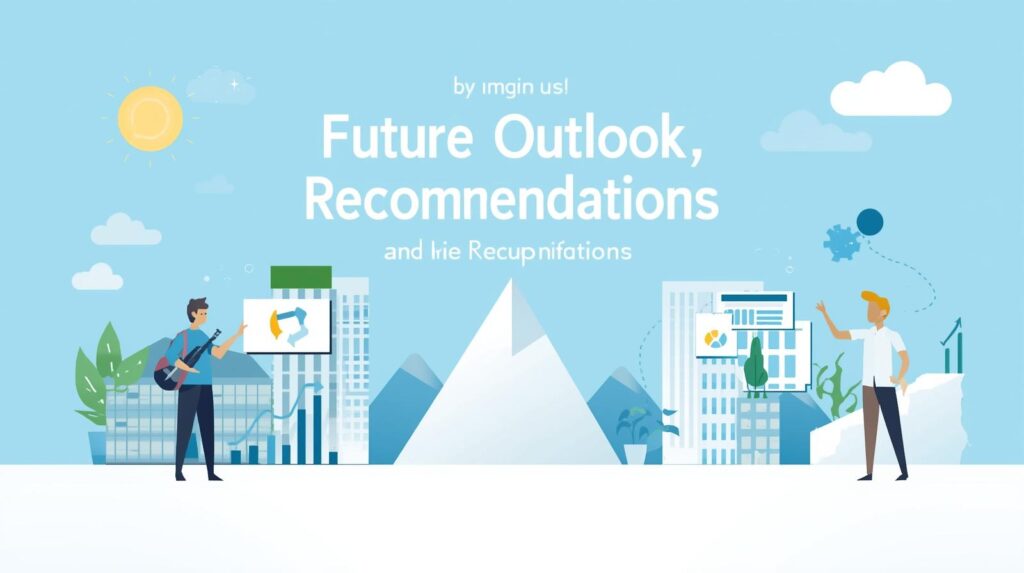Artificial Intelligence in Business: 2025
Artificial Intelligence (AI) no longer sits at the edge of possibility. It is active, integrated, and recalibrating how businesses operate, compete, and grow. In 2025,
AI is not optional. It is part of the core strategy for companies that intend to stay relevant and lead within their industries.
AI Defined—And Evolving
At its core, AI refers to the capability of machines to simulate human intelligence. This includes reasoning, learning from experience, recognizing patterns, interpreting natural language, and making decisions. But definitions only scratch the surface. What matters for business is how AI is being applied in practice.
Today, AI is fueling precision in decision-making, automating high-volume workflows, and surfacing insights organizations could never have mined manually. Its pace of learning, especially with advanced machine learning and multi-modal models, allows systems to improve with every interaction. More importantly, AI doesn’t work in isolation. It’s influencing nearly every functional area across the enterprise—from operations and marketing to finance and product development.
The Acceleration Curve to Watch
In 2025, AI’s impact is expanding faster than many leaders are prepared for. What was a long-term strategic consideration in previous years has become a near-term operational necessity.
Seven trends define this shift:
- Emergence of enterprise-ready AI platforms that lower barriers to implementation
- Widespread automation of both repetitive and knowledge-based tasks
- Integration of AI into core customer interfaces such as chat, voice, and search
- AI-assisted forecasting in planning, supply chain, and finance workflows
- Use of generative AI for content development, product ideation, and solution design
- Real-time analytics and anomaly detection embedded directly into business systems
- Cross-functional AI orchestration connecting data environments across departments
Each of these represents a directional shift—not a fleeting trend. Individually they alter how work gets done. Together they redefine what it means to operate at scale with intelligence built in.
Why This Demands Your Focus
If you’re a business leader, entrepreneur, or technology professional, ignoring the trajectory of AI places your organization behind the curve. AI is not just a technical issue. It’s a boardroom issue. It affects product strategy, customer experience, workforce planning, and profitability. The implications reach every department and demand informed judgment at the top.
Operational leaders need to assess which tools align with short-term efficiencies and long-term capability building. Financial leaders must understand how AI impacts forecasting assumptions, productivity ratios, and people costs. Product teams are rethinking roadmaps around AI-enhanced value. And HR is facing real decisions around how roles evolve in an AI-assisted organization.
The Competitive Stakes Are Real
No matter the industry or company size, AI adoption signals operational maturity. Enterprises that treat AI as an integrated component of their business model are pulling further ahead. They respond faster to changes in market demand. They do more with the same team. They spend less time on guesswork and more time on execution.
If you’re evaluating where AI fits into your business, the answer isn’t in the future—it is right now.
Understanding what AI is, how it’s evolving in real time, and what it means for your business is the first mandatory step. Every decision-maker should be prepared not only to interface with AI from a use-case perspective, but also to guide teams through capability shifts and process redesigns sparked by AI-wide integration.
This Is the Moment to Pay Attention
The companies that thrive in 2025 are already operationalizing AI. Not as a one-time project. Not as a single app retrofit. But as a strategy. As a system-wide rethink of how they solve problems, serve customers, and grow.
Your responsibility now is to understand the pace and direction of AI’s influence. If you’re not leading that conversation in your organization, someone else will. And the cost of waiting will continue to rise.
Understanding AI Technologies Shaping Business

To navigate AI successfully in 2025, leaders must understand more than just the concept. They need clarity on the core technologies behind AI and how those systems are already reshaping operations, decision-making, and output across departments.
Artificial intelligence is not one technology. It’s a layered system of capabilities built on foundational tools. From algorithmic training to automation engines, each discipline plays a distinct role in how AI creates tangible business value.
Key AI Technologies Driving Business Capabilities
- Machine Learning (ML): The engine that underpins most intelligent systems. ML processes vast datasets, identifies patterns, and adjusts models based on new input. Businesses rely on ML models to improve forecasting, detect outliers, adjust workflows, and fine-tune performance recommendations—all with minimal manual oversight.
- Natural Language Processing (NLP): NLP enables machines to interpret human language. It powers AI tools that read, write, and converse across text and voice channels. Organizations use NLP to analyze sentiment in customer feedback, automate document processing, and drive conversational interfaces like chatbots and virtual assistants.
- Computer Vision: This technology enables machines to derive insights from visual inputs. Computer vision supports functions such as quality control in manufacturing, document verification in financial services, and visual search in retail. It allows businesses to automate error detection and track visual trends at speed.
- Automation Engines: While automation predates AI, intelligent automation fuses ML and NLP capabilities into workflows. This delivers dynamic process improvements beyond static rules. Routine approvals, data transfers, and exception handling are being reconfigured into responsive systems that adjust in real time.
- Generative Models: These models create new content rather than just analyzing inputs. Teams use generative AI for product ideation, marketing assets, data augmentation, and internal knowledge retrieval. The impact on speed and scale is already changing how creative and technical tasks are executed.
Each of these technologies contributes discrete value. Together they form the architecture of AI-first business systems. Knowing how they interact is the
between applying tools reactively and designing work
flows that scale intelligently.
Where AI Technology Meets the Business
Understanding the raw technology is one side of the equation. The other is identifying where these tools deliver performance gains inside the business itself. AI capabilities aren’t limited to IT or data science teams. Their utility in 2025 sits inside the operational, financial, customer-facing, and product-building engines of an organization.
Functional integration looks like this:
- Operations: AI automates daily workflows, evaluates efficiency gaps, and balances resource use based on current demand or constraints. ML algorithms continuously improve output by analyzing performance trends over time.
- Finance: ML models monitor transaction streams, flag anomalies, and support adaptive forecasting tools. AI brings agility to budgeting and shortens decision cycles tied to profitability planning.
- Sales and Marketing: NLP and predictive analytics adjust messaging strategies, qualify leads based on likelihood to convert, and personalize engagement down to the individual profile. Generative models rapidly create on-brand content variations for multi-channel campaigns.
- Customer Support: Virtual agents and AI-powered service tools manage tickets, triage requests, detect sentiment, and route complex queries to human support—reducing backlog and improving average issue resolution time.
- Product and R&D: Generative AI simulates design concepts. Computer vision improves usability testing. ML highlights product usage patterns to inform roadmap priorities. Teams prototype, iterate, and deploy faster with intelligent augmentation.
This isn’t IT’s job alone anymore.
As more departments adopt AI-driven tools, the collaborative tension between technology and functional leadership increases. Smart implementation requires shared language and mutual understanding across data scientists, operational executives, and business strategists. The teams that move fastest are the ones that treat AI as a fabric woven into day-to-day decisions—not a service outsourced to a tech silo.
Framework for Evaluating AI Integration Points
To apply AI in practice, business leaders should assess opportunities across four primary dimensions:
- Volume: Where do teams handle high-volume data or task repetition that AI can automate or structure?
- Speed: Which workflows are constrained by human cycle times or time-sensitive decisions?
- Insight: Where are teams relying on assumptions, lagging data, or incomplete information to act?
- Interaction: How much employee or customer interaction can be streamlined with intelligent responses or routing?
Use this as a diagnostic lens to map AI potential against operational need. Each answer should connect directly to measurable outcomes such as reduced processing time, increased forecast accuracy, or improved lead conversion.
Integration starts with awareness, not pilots. You don’t have to deploy everything at once. But you do need a clear view of which technologies are mature enough for use, which align with your current goals, and where internal teams need education before moving forward.
The next chapters in AI adoption are already being written inside core business systems. The companies that get ahead in 2025 will not be the ones with the most advanced tools. They’ll be the ones who understand where, when, and how each engine contributes to real performance gains.
Strategic Business Transformation through AI

Artificial intelligence is no longer a ba
ckend tool. It’s a frontline driver of business
transformation that impacts how companie
s generate revenue, engage with custom
ers, and respond to market shifts. In 2025, smart organizations are embedding AI into the foundation of their business models. The result isn’t just efficiency. It’s new opportunities for growth that weren’t remotely possible five years ago.
Rethinking the Business Model
AI enables structural changes to how businesses create and deliver value. Instead of viewing AI as a layer on top of existing operations, leading organizations are reengineering their operating models with AI at the core. This shift leads to entirely new offerings, new monetization strategies, and new competitive positions.
Here are three dimensions where AI-driven business models are emerging:
- Product-as-a-Service: AI turns traditionally static products into dynamic services. When machine learning models are embedded into physical or digital products, those products evolve with use, gather performance data, and enable real-time upgrades. This transforms transactional business into recurring value delivery.
- Data-Driven Ecosystems: Companies with AI capabilities are launching ecosystem-based models that generate value from cross-platform insights. These businesses aggregate first-party data and apply real-time learning to inform product development, pricing, logistics, and customer service collectively.
- Personalization at Scale: what used to require separate products or high-touch service models is now delivered through backend intelligence. AI tailors content, offerings, and support based on individual behavior patterns, opening up scalable experiences without adding headcount or custom workflows.
These models are not minor variations of old approaches. They shift how value is generated, priced, and maintained. More importantly, they’re reinforcing differentiation in crowded markets.
Redefining Customer Engagement
Customer expectations are changing faster than service teams can keep up. What AI enables is proactive, real-time, and precise engagement strategies that scale across digital and human touchpoints. You’re not just answering inquiries faster—you’re anticipating them. You’re not just segmenting customers—you’re interacting with each one as if you built the system just for them.
Key shifts in AI-driven engagement include:
- Continuous Experience Loops: AI uses every interaction to improve the next. A query today makes the system smarter tomorrow. This feedback loop sharpens targeting, boosts retention, and eliminates redundant communications.
- Predictive Support Models: AI systems flag customer frustration before a ticket is even logged. They reroute high-dependency users to higher-tier support or automatically apply pre-approved offers to reduce churn risk.
- Generative Content Personalization: AI tools dynamically create product descriptions, recommendations, or outreach scripts tailored to behavior, transaction history, or engagement patterns. This isn’t repurposing. It’s real-time asset generation locked to user context.
This change is more than a tool swap. Engagement strategies led by AI move from binary interactions to adaptive journeys. From customer onboarding through renewal or repurchase, AI allows businesses to understand and influence behavior without relying purely on gut, teams of manual analysts, or outdated personas.
Gaining a Competitive Edge through Agility
Most business leaders know improving speed-to-market is important. What they overlook is how AI directly enables business agility through faster insight generation, automated experimentation, and decision alignment.
Here’s what that looks like in practical terms:
- Rapid Iteration Cycles: AI models test multiple variants of a campaign, pricing structure, or feature set simultaneously, identifying optimal performers in compressed timelines. This shortens experimentation from quarters to days.
- Dynamic Risk Management: AI watches live operations with pre-programmed risk thresholds and initiates corrective actions before manual reviews would even flag an issue. This tightens risk loops dramatically and pushes decision-making closer to real time.
- Cross-Functional Foresight: With AI feeding predictive inputs into sales, finance, and operations in parallel, functional teams align strategy with live data rather than playing catch-up. It closes the planning-execution-performance gap that slows most traditional organizations.
Agility isn’t about moving faster randomly. It’s about moving decisively based on better signals.
AI delivers those signals in readable, customizable formats that remove guesswork and guessers from the executive decision process. This alone changes who wins in fast-moving markets or volatile sectors.
Innovation Doesn’t Happen by Accident
Innovation used to be a dedicated practice—often isolated in R&D or product strategy silos. In AI-enabled companies, innovation is continuous and cross-functional. The data loops, automation capabilities, and generative capacities built into AI frameworks allow for constant prototyping, feedback, and agile releases—without requiring long innovation cycles or executive bottlenecks.
Think in terms of:
- Automated Discovery: ML systems propose process improvements based on underlying anomalies or performance gaps, suggesting not just what needs fixing but how to fix it.
- Synthetic Testing: Generative AI tools create test environments, messaging variants, or user interface simulations that allow teams to validate concepts without full builds.
- Collaborative Development Engines: AI-assisted collaboration tools break down silos between product, engineering, and design teams by translating goals into tasks and surfacing interdependencies as they appear.
The result isn’t more ideas—it’s more ideas shipped, refined, and operationalized. And that margin is where long-term competitive advantages are built.
AI is not here to automate your existing business. It’s here to help you invent the next one.
In 2025, the organizations that are growing aren’t the ones with the most AI tools. They’re the ones who understand how to architect AI into the core of how they operate, deliver value, and adapt under pressure.
Operational Efficiency and Automation
AI is no longer reserved for tech labs or innovation departments. In 2025, it sits directly inside the operations engine of organizations trying to move faster, waste less, and make sharper decisions without adding overhead. Efficiency is no longer defined only in terms of workforce productivity or cost containment. AI shifts that metric toward total system throughput, adaptive resource use, and real-time decision confidence—in every layer of the business.
Simplifying Complex Operations
Behind every customer experience, product release, or P&L objective sits a complex set of workflows. These involve data ingestion, cross-team coordination, manual checkpoints, and exception handling. AI is pulling these apart and rebuilding them with self-optimizing logic. Whether you’re looking at manufacturing, financial processes, logistics, or service delivery, AI inserts intelligence into workflows that used to be purely reactive.
Consider this framework to identify where complexity can be simplified:
- Repetition Frequency: Identify operations with high-frequency repetition. AI performs best in scenarios where it can learn from repeated exposure and optimize over time.
- Variability Tolerance: Pinpoint workflows where human error or judgment variability regularly impacts outcomes. AI reduces inconsistency by applying models uniformly across inputs.
- Manual Dependencies: Target processes with multiple handoffs, queues, or approvals. AI can streamline or eliminate decision bottlenecks by predicting next steps and routing appropriately.
- Realtime Pressure: Focus on tasks that demand up-to-the-minute responsiveness. AI thrives on speed and adapts to real-world input faster than traditional scripts or routing rules.
When applied deliberately, AI doesn’t just replace a manual task. It restructures how the process even works, condensing timelines, improving accuracy, and freeing bandwidth for higher-value work.
Supply Chain Optimization in Action
Supply chains have historically been limited by static forecasts and delayed feedback loops. In 2025, AI closes those gaps. It connects data across inventory, logistics, demand forecasting, vendor performance, and even global risk signals to build systems that adapt ahead of disruption.
- Forecasting Integration: Machine learning models ingest real-time sales, pipeline, and macroeconomic data to continuously update demand forecasts. These updated insights flow directly into procurement and production planning systems without waiting for the next reporting cycle.
- Dynamic Routing Engines: AI systems monitor transport routes, cost fluctuations, and external delays (such as weather or geopolitical disruption) to reroute shipments automatically based on updated delivery timelines or risk profiles.
- Inventory Balancing: AI rebalances stock across distribution centers based on short-term demand shifts or anticipated shortages, using predictive triggers rather than reactive adjustments.
- Vendor Analytics: Supplier performance is continuously evaluated through AI-driven scoring models that track fulfillment reliability, cost variances, and quality levels. This shifts vendor selection from historical preference to data-backed performance insights.
This isn’t just logistics science. It’s a strategic advantage.
Companies applying AI to these functions respond quicker to shifts in demand, reduce response lag during disruption, and spend significantly less time reconciling exceptions or overstock. That speed compounds into stronger customer fulfillment rates and lower carrying costs.
Smarter, Faster Decision-Making Models
AI doesn’t just run background tasks. It influences real decisions at strategic and operational levels. Especially in domains like finance, operations, sales planning, and workforce management, AI feeds decision engines with real-time inputs, risk thresholds, and recommended actions.
Use this decision-acceleration criteria set to prioritize AI support:
- Data Noise: Where teams are overloaded with data but underwhelmed by clarity, AI models can synthesize signals, reduce redundancies, and surface actionable insights.
- Decision Fatigue: For decisions made frequently by multiple stakeholders (like pricing approvals, inventory allocation, or shift scheduling), AI enables consistent, rules-informed outputs with minimal oversight.
- Scenario Volatility: In fast-changing environments, AI can model multiple outcome paths and signal the most stable or cost-efficient options based on live inputs.
- Lagging Metrics: AI ties lagging metrics (like sales or churn) to leading predictors based on behavior data, converting hindsight-to-foresight in operational planning.
Instead of waiting on reports, cross-team alignment meetings, or gut feel, decision-makers are acting on high-confidence recommendations tailored to the current context, not last quarter’s playbook.
Reducing Cost Without Creating Friction
Cost reduction is often painful. It strips resources, delays investment, and compromises quality. AI changes that equation by delivering cost savings through intelligent automation and waste reduction, not by eliminating people or capabilities. The focus is efficiency gain, not expense cuts for their own sake.
- Error Reduction: AI lowers the incidence of rework, returns, and service recovery by improving predictions and reducing missteps before they occur.
- Labor Reallocation: Routine manual tasks get reassigned to AI agents, allowing skilled employees to focus on strategic work, customer relationship-building, or problem-solving that adds top-line value.
- Throughput Expansion: More work gets done with the same or smaller workforce. AI doesn’t tire, clock out, or pause between tasks. That consistent output increases unit-level efficiency without sacrificing employee morale.
- Process Consolidation: AI often reveals overlapping or redundant processes that were previously invisible. Streamlining these workflows reduces licensing, system maintenance, or support overhead.
This is disciplined automation, not scattershot replacement.
When done right, AI creates space—not layoffs. It gives your teams room to think instead of just execute. And it resets the baseline for cost-performance ratios that had previously plateaued.
If you’re serious about operational maturity in 2025, AI is no longer a future bet. It’s a current imperative. The organizations gaining margin and momentum right now are not the ones automating for convenience. They’re the ones who know exactly where intelligence and automation remove drag, realign effort, and build capacity that scales even when headcount doesn’t.
Enhancing Customer Experiences with AI

Customer experience is n
o longer confined to simple sati
sfaction metrics or
-interaction surveys. In 2025, how businesses engage, support, and understand their customers is being shaped in real time by AI. What used to depend on teams of representatives, static journey maps, or rigid segmentation has given way to intelligent systems that adapt responses, anticipate needs, and drive consistency without sacrificing personalization.
AI-Driven Personalization at Scale
Personalization is no longer a luxury—it’s an expectation. Customers want relevant recommendations, timely responses, and interactions that feel tailored to them. AI enables this by processing user behavior, preferences, and contextual data instantly, then applying that insight across every touchpoint.
Key components of AI personalization include:
- Behavioral Pattern Recognition: AI systems track interaction histories, content engagement, and purchase behavior to model customer intentions. This allows businesses to match offerings to predicted needs before the customer makes a request.
- Dynamic Content Generation: Generative models produce personalized content—from product descriptions and landing pages to email subject lines and chatbot replies—all tuned to reflect individual preferences or previous interactions.
- Profile-Driven Adaptation: Customers no longer need to repeat themselves across channels. AI maintains a persistent understanding of their preferences, support history, and goals, then reflects that continuity across web, app, phone, and in-person channels.
This isn’t personalization via preference toggles or demographic groups.
It’s feedback-driven alignment at the individual level—consistent, contextual, and invisible from the user’s perspective. When executed well, AI personalization doesn’t feel like a filtered experience. It feels like relevance, clarity, and intuitive interaction.
Improving Speed and Quality of Service Delivery
Responsiveness remains one of the clearest indicators of effective customer service. But in 2025, it is no longer measured in hours or even minutes. AI-powered systems cut wait times, minimize friction, and route issues accurately the first time—without exhausting human teams or ballooning operational cost.
Core drivers of AI-optimized service delivery include:
- Automated Triage and Routing: AI systems detect intent and urgency from customer input (typed or spoken) and determine whether to self-serve, escalate, or transfer to live agents. This reduces transfer loops and accelerates time to resolution.
- Predictive Response Engines: Instead of responding to a question, AI systems anticipate follow-up questions and address them in the same interaction. This shortens conversations while boosting usefulness.
- Sentiment-Aware Interaction Management: Real-time emotion and tone analysis allows AI to adjust communication style, escalate unhappy interactions, or de-escalate frustration through tone tuning. It guides tone and pacing in ways traditional scripts cannot replicate.
AI doesn’t eliminate the human role. It optimizes when and how it’s used.
By reducing unnecessary contact points and pre-handling routine steps, employees are freed up to handle complex or sensitive needs where empathy and judgment matter more than speed.
Gaining Deeper Customer Insights Without Manual Analysis
Insight is often the missing link between data collection and customer understanding. Most organizations collect massive amounts of customer data but fall short of turning it into actionable intelligence. AI changes that by translating unstructured behavior into structured insights automatically.
AI-based insight generation works across these key functions:
- Sentiment Tracking Across Channels: AI processes language from emails, chats, survey responses, and reviews to track changes in sentiment. It flags patterns like rising complaints, emerging product gaps, or customer confusion without manual tagging or sampling.
- Intent Detection Models: These models surface hidden patterns in customer behavior to identify purchase readiness, churn risk, upsell potential, or service dissatisfaction—often before the customer expresses it outright.
- Journey Path Analysis: AI models track how customers move through the business ecosystem across ads, product pages, support tickets, and repeat transactions. It identifies common drop-off points, friction moments, or loyalty signals in time to act on them.
The takeaway is simple.
You cannot serve what you cannot see. With AI, businesses replace delayed, sampled, or siloed reporting with live visibility into customer signals. That visibility supports smarter prioritization, personalized marketing, targeted support, and stronger loyalty outcomes.
Framework for Applying AI to Customer Experience Strategy
Applying AI effectively depends on selecting the right kind of intelligence for each experience layer. Use this strategic framework to align AI capabilities with customer experience objectives:
- Know Stage (Discovery and Awareness): Use AI for behavior-based targeting, personalized outreach content, and predictive audience modeling.
- Engage Stage (Consideration and Purchase): Deploy AI in chatbots, search assistance, pricing simulations, and personalized product recommendations.
- Support Stage (Service and Onboarding): Apply AI to automate FAQs, route requests, suggest learning modules, and track onboarding friction.
- Retain Stage (Retention and Loyalty): Let AI monitor churn patterns, optimize re-engagement timing, and generate tailored renewal offers or rewards.
Each phase has a distinct customer objective. AI should support—not replace—that intent while requiring minimal extra effort from the customer.
Consistency is the multiplier most companies miss. It’s not enough to sprinkle AI in a few support scripts or product pages. The real gains happen when customer understanding and system responsiveness are embedded across every step of the relationship.
You don’t need more data. You need better reactions.
In 2025, customer experience is shaped by how well your systems respond in the moment. AI makes it possible to deliver timely, tailored, and seamless interactions at scale—without overreliance on headcount or guesswork. That shift—from reactive to predictive, from generic to specific—is what separates stagnant customer journeys from those that drive growth, loyalty, and margin.
AI-Driven Product and Service Innovation

AI is not just optimizing how companies operate in 2025. It is reshaping what they create. From accelerating product development timelines to driving smarter iterations, AI sits at the center of modern innovation strategy. For product and R&D teams, AI is no longer a tool used late in the process. It is influencing the direction, design, testing, and evolution of offerings from day one.
Accelerating the Research and Development Pipeline
Traditional R&D timelines often get bogged down in experimentation cycles, manual testing, and data disparity across teams. AI compresses those inefficiencies with faster signal detection, better hypothesis testing, and continuous feedback evaluation. Instead of months of trial and error, development teams can reach validated prototypes in days.
Use this R&D acceleration framework to identify where AI speeds up progress:
- Automated Data Analysis: Machine learning inspects research inputs, past performance, and conflicting datasets to surface promising trends and discard noise earlier in the process.
- Predictive Simulation: AI models forecast the performance of a potential product or feature without needing physical mock-ups or audience panels. Teams simulate outcomes based on current usage data and adjust approaches before real-world rollout.
- Smart Prioritization: AI identifies which features or innovations are likely to generate the highest user impact or business value based on live behavior trends and feedback loops.
The result is faster insight with less waste.
You move from experimentation cycles slowed by spreadsheet analysis to integrated decision systems that show where and why to push forward—backed by real-time logic.
AI as a Creative Engine
Creativity is no longer limited to human ideation or drawn-out brainstorming. In 2025, teams are partnering with AI to create not just more ideas, but stronger, data-backed ones. Generative systems provide concept suggestions, early-stage designs, and performance-ready content before traditional creative sessions would even begin.
Consider this framework for using AI in creative product development:
- Concept Generation: Generative AI proposes new variations of products, services, interfaces, or design elements based on input criteria like target market need, historical sales, or competitor positioning.
- Prototype Synthesis: Teams feed rough ideas into AI tools that generate usable mockups, wireframes, or packaging layouts—reducing the friction of early visual exploration.
- Instant Testing Content: AI creates synthetic messaging or interface variations that mirror real audiences, enabling pre-testing before committing design cycles or budget to candidate ideas.
This isn’t outsourcing creativity. It’s expanding it.
When product and marketing teams shift their role from originators to evaluators, they gain both speed and clarity. The ideation bench deepens, and the lift required to validate directions gets lighter. You win time, without lowering the creative bar.
Turning Feedback Loops Into Innovation Cycles
In the past, products were launched and then improved slowly based on sales patterns, support tickets, or survey responses. That lag created a gap between launch intent and long-term relevance. AI shortens that loop. It collects, processes, and reacts to feedback while the product is still scaling. Innovation doesn’t stop at launch. It evolves with the user.
To structure continuous improvement using AI, focus on these layers:
- Usage Analytics: AI detects patterns in how customers interact with features, where they disengage, or where performance bottlenecks emerge. Updates are guided by behavioral input, not assumption.
- Natural Language Processing on Customer Feedback: AI scans open-ended comments, chat logs, and reviews to extract themes, track sentiment shifts, and suggest improvement categories without waiting for human coders to tag issues manually.
- Intelligent Versioning: Instead of static versions released on fixed timelines, AI systems can suggest or deploy dynamic feature variations to different user segments in response to usage signals.
AI enables iteration to happen in motion. Not postmortem.
That’s the shift. Feedback becomes a guiding input to development rather than a lagging indicator. And those who can act on that feedback first lock in stronger retention, performance alignment, and customer trust.
Expanding Capability Without Expanding Teams
Hiring new talent to enable every new direction is inefficient. AI fills that capacity challenge by multiplying team output in key areas without expanding headcount. Whether it’s speeding up documentation, testing concepts faster, or filling in content gaps, AI does the work between the work that used to slow down progress.
Key areas where AI supplements team capability include:
- Knowledge Retrieval: AI curates and surfaces internal research, past project data, and market intelligence so teams avoid redundant work or blind spots in design decisions.
- Performance Modeling: Before rolling out new ideas, AI runs performance simulations to predict impact, allowing teams to proceed or pivot efficiently.
- Standardized Documentation: From product specs to risk assessments, AI helps draft and format key internal documents based on inputs and organizational standards.
This is about output, not automation for its own sake. AI sits beside skilled professionals and handles tasks that are high-effort but low-value, giving those professionals more space to think, align, and execute.
If innovation is your product, AI is your throughput strategy. The constraint is no longer creativity or inspiration. It’s friction. AI doesn’t just generate new ideas. It reduces all the resistances that slow ideas from becoming reality.
In 2025, AI-driven innovation is about speed, relevance, and adaptability. The companies shipping smarter products and services right now aren’t depending on luck or chasing trends. They’ve built process environments where intelligence guides direction, feedback is always in play, and teams focus on progress—not just completion.
Challenges and Risks Associated with AI Adoption
AI integration may be accelerating in 2025, but the path isn’t frictionless. While the upsid

e is clear—operational gains, smarter decisions, and competitive speed—those benefits don’t arrive without cost or complexity. Business leaders must confront a set of risks that slow adoption, introduce liability, or compromise long-term scalability.
Implementation Complexity Exceeds Technology Alone
Deploying AI goes beyond plugging in a platform. It requires coordinated shifts in data strategy, workflows, governance, and cross-functional alignment. Most false starts share common patterns:
- Disconnected systems: Data silos across departments prevent AI models from accessing the full context needed to perform reliably.
- Unclear objectives: Teams pursue AI for the sake of AI without defining what problem it is solving or how success will be measured.
- Insufficient data readiness: Training models on outdated, incomplete, or unstructured data degrades output and drives mistrust across users.
- Integration headaches: AI tools may not align with legacy IT stacks or require custom connectors to business-critical applications—adding cost and complexity.
Sophistication doesn’t equal utility.
AI models can run flawlessly in test environments and still stall when deployed into real business systems. The issue is rarely the model itself. It is the failure to prepare the surrounding environment. Leaders need to view AI as a design challenge that spans data pipelines, business logic, and user interaction—not a plug-and-play solution.
Workforce Implications Are Not One-Size-Fits-All
AI transforms how work gets done, but it also reshapes who does that work and what skills they need. This shift impacts hiring, internal development, job descriptions, and employee morale.
- Job redefinition: Tasks previously requiring human judgment are now supported—or completed—by AI. Roles are being split between oversight and exception handling, often without clear retraining paths.
- Skill gaps: Business functions now need more data literacy, systems thinking, and AI fluency. Most teams weren’t hired or trained for this, and the talent market can’t fill every gap externally.
- Resistance to change: When teams associate AI with job loss or role devaluation, adoption slows. Change management and communication strategy become just as important as the technology stack.
- Oversight fatigue: As AI output increases, human teams are asked to oversee results they don’t fully understand. Confidence drops when people can’t verify how decisions are made or why.
This is not a manpower problem. It’s a capability realignment problem.
Executives need to be explicit about the role AI plays in workflows and the long-term career paths being built around it. Without that clarity, even the best systems underperform because they lack skilled partners on the human side of the equation.
Algorithmic Bias and Fairness Are Live Risks
The risks of bias in AI decision-making aren’t theoretical. They’re active, embedded, and hard to detect until the effects become visible. Since AI learns from historical data, it often inherits the limitations, exclusions, or prejudices embedded within it.
- Training data skew: Models trained on biased inputs perpetuate discrimination—whether in hiring, lending, resource allocation, or pricing strategies.
- Opaque logic: When decisions are made inside a black box, stakeholders can’t interrogate their fairness. Lack of transparency undermines trust and invites scrutiny.
- Static models in changing environments: A model that was fair based on past behavior can drift from fairness as audience behavior, laws, or expectations evolve.
- Unconscious reinforcement: AI optimizing for past success patterns may ignore underserved segments, reinforcing structural imbalance inside performance metrics and business outcomes.
Fairness can’t be wished into a system. It must be designed, tested, and monitored.
Responsible teams build governance layers into AI projects from the start. That includes clear audit trails, explainable model components, and consistent evaluation of equity impacts across demographic or geographic profiles.
Data Privacy and Regulatory Pressure Are Mounting
AI requires data to function. But the more data you collect, centralize, and process, the greater the exposure to privacy breaches, legal violations, and customer pushback. The regulatory pressure on data-driven technology is tightening, whether businesses are ready or not.
- Consent ambiguity: Many systems collect behavioral or contextual data indirectly, raising concerns about whether consent was meaningful and informed.
- Data sprawl: As teams rapidly adopt AI tools, they may duplicate data across vendors, test environments, and sandboxes—each copy expanding the attack surface.
- International constraints: Global operations must align with multiple, often conflicting, data governance regimes. What’s acceptable in one market may violate laws in another.
- Surveillance backlash: Even compliant data practices can trigger customer backlash if perceived as invasive, especially in employee monitoring or predictive modeling.
Privacy isn’t compliance-only territory anymore. It’s a trust asset.
The organizations leading on AI are the ones that embed privacy as a first-order design condition. That includes governance checks, clear retention protocols, and architecture that filters sensitive data before reaching training environments.
Security Threats Are AI-Driven, Too
AI doesn’t just power your business. It powers threats against it. Cyberattacks, phishing strategies, and fraud infrastructures are now AI-supported—and evolving faster than traditional defenses can keep up.
- Adversarial models: Malicious actors use AI to create inputs that deceive your systems—prompting incorrect decisions or degrading prediction accuracy undetected.
- Threat scale multiplication: AI allows attackers to automate and personalize attack strategies, scaling cyber threats in both volume and effectiveness.
- Shadow AI: Employees using unauthorized AI tools introduce unvetted code, unencrypted data transfer, or weak authentication vectors into secure systems without oversight.
- Intellectual property risk: When proprietary data is used to train external AI models, businesses face leakage of competitive intelligence, trade secrets, or brand voice inconsistencies.
Security can’t be layered on later. It starts with AI architecture itself.
That means balancing performance demands with access controls, vetting third-party models for exposure risks, and monitoring system behavior for signs of adversarial interference—not just configuration errors.
No Smart System Is Risk-Free
AI adoption delivers real leverage, but with that comes new classes of risk. These aren’t reasons to delay. They’re reasons to lead boldly, with eyes open and responsibilities shared.
If you’re overseeing AI deployment across your business, your role isn’t just capture gains. It’s to anticipate misuse, contain fallout, and design limits that support growth without inviting harm.
Resilience must outpace automation. The businesses that scale with confidence are the ones that build governance into strategy—so they don’t trade short-term efficiency for long-term exposure.
Ethical and Governance Considerations in
AI Deployment

By 2025, using AI without strong ethics and governance isn’t just careless—it’s a direct risk to your business. The more decisions you shift to algorithms,
more exposure you carry if those systems operate wi
thout transparency, accountability, or an auditable trail. Whether you’re automating hiring, pricing, workflow routing, or customer targeting, leadership must build clear frameworks that control for how AI behaves, learns, and impacts stakeholders.
Ethical AI Isn’t a Checkbox—It’s Operational Policy
Ethics in AI is not fluff or public relations. It’s about codifying business values into every stage of your AI lifecycle: from data collection and model training to deployment and monitoring. Without deliberate design, AI learns from everything—including biases, exclusion patterns, or unintended incentives embedded in historical data.
Key dimensions to evaluate in ethical design:
- Purpose Alignment: Every AI tool should solve a problem that clearly aligns with your mission and customer promise. Tools deployed just because they’re available often violate trust or impair decision quality.
- Bias Identification: Your models must be tested initially and iteratively against unfair decision patterns. That means isolating how inputs correlate to sensitive attributes and correcting any drift as the model learns over time.
- User Rights Visibility: Customers and employees interacting with AI systems deserve to know they are doing so, and what influence those systems have. Consent and notification aren’t optional—they’re structural requirements.
- Abort Paths: Ethical systems offer built-in opt-outs or override options for human review, especially in high-consequence outputs like hiring, loan approval, or penalty assessments.
Effective ethics means friction by design where friction is needed. Slow down what could cause harm. Speed up what builds utility and trust. Anything less trades convenience for credibility.
Building Transparent and Explainable Systems
AI power increases with usage. But with that power comes opacity. Many business users don’t understand why a model recommended an action—only that it did. This black box scenario creates gaps in oversight, accountability, and even regulation.
Implement transparency through structural design:
- Traceable Decision Logs: Your AI platform should produce a record of what inputs were used, what assumptions were made, and how the decision step occurred. Treat it like a compliance-grade audit trail.
- Simplified Language Output: Translating complex model logic into non-technical summaries helps business stakeholders and regulators understand risk implications or fairness boundaries before deployment.
- Version Control for Models: Old models can’t stay hidden in production. You need a clear catalog of what is active, who trained it, what data was involved, and which departments rely on its output.
If your team can’t explain the decision, it shouldn’t be automated yet. Transparency is both a system requirement and a management responsibility.
Establishing Strong Accountability Frameworks
AI governance is not a legal function. It is a strategic discipline embedded across the business. Accountability means defining ownership, not just assigning blame after something breaks. It connects ethical intent with operational procedure and performance oversight.
Build accountability with these core anchors:
- Model Stewardship Roles: Every operational model must have a named steward responsible for performance, bias evaluation, oversight updates, and tracking downstream impact.
- Cross-Functional Governance Committees: Include representatives from legal, compliance, data science, and business operations to review model deployment proposals and risk assessments collectively.
- Tiered Risk Classification: Not all AI decisions carry the same risk. Segment projects into low, medium, and high consequence levels—each with its own approval rigor and documentation requirements.
- Escalation Protocols: When a model fails, or someone flags harm, your system should trigger a known response process—not a scramble. That protocol must account for internal users, customers, and regulators alike.
Accountability shouldn’t rely on memory or moral instinct. It lives in structured playbooks. AI systems evolve. Your governance has to evolve faster.
Managing Compliance as a Moving Target
Legal frameworks for AI are advancing quickly in 2025—and they vary across jurisdictions. From privacy obligations to decisions impacting civil rights or financial access, failure to meet regulatory requirements isn’t just expensive. It invites reputational damage, lawsuits, and even bans on deployment.
To stay compliant, deploy systems that are:
- Privacy-Aware by Design: Data minimization, consent logging, usage boundaries, and default anonymization aren’t bolt-ons. They must be built into the architecture powering your models.
- Differentially Documented: Every AI initiative should contain a compliance narrative—what laws or norms apply, how the model complies, and what triggers require reassessment or re-auditing.
- Stored for Accountability: Retain training sets, logic versions, and deployment parameters in registered repositories. When regulators or auditors knock, scrambling isn’t a defense strategy.
AI compliance isn’t static. What was acceptable a quarter ago may violate new rules this year. Your organization needs resource capacity and governance agility to adjust standards before exposures become liabilities.
Governance as Culture, Not Just Control
The most resilient organizations in 2025 aren’t just checking compliance boxes. They’ve created a culture where responsible AI use is expected, understood, and owned at the team level. That means business units don’t wait for policy memos. They participate in governance proactively because it’s how performance gets measured and success gets defined.
Promote culture through:
- Mandatory AI Literacy Training: Include ethics, risk awareness, and system boundaries. Make it required for product, legal, marketing, and operations teams—anyone making decisions that affect how automation is applied.
- Ethics Impact Assessments: Require teams to answer known risk prompts as part of AI planning: Who could be impacted negatively? What signals are tied to protected characteristics? How will fairness be tracked long term?
- Public-Facing Governance Stances: If your customers or partners don’t know how your AI operates, you have a trust gap. Publish the commitments and controls you’re enforcing—internally and externally.
You don’t need a perfect framework. You need visible responsibility and a clear posture. From executives to frontline users, people must know that governance isn’t a burden. It’s the cost of building intelligent systems that the business—and its customers—can stand behind.
Trust is earned at the design stage, not after launch. If you’re deploying AI in 2025, it’s not enough to prove performance. You must prove that your systems represent your values—and know where the boundaries are.
Preparing Your Organization for AI Integration

Integrating AI into your business isn’t a matter of buying tools and hoping they work. It’s a
multidimensional shift that touches leadership str
ategy, workforce design, internal culture, and h
ow teams align around new technologies. In 2025, the companies making AI productive are not the ones chasing trends. They’re the ones deliberately preparing their organizations to adopt AI in a scalable, secure, and sustained way.
Leadership Sets the Direction
Nothing slows down AI adoption faster than leadership indecision. Your teams don’t need more internal memos about “exploring AI opportunities.” They need clarity about what the organization values in AI and how those priorities connect to performance, risk, and growth. That starts at the top.
Executive leadership should focus on:
- Stated Intent: Be explicit about where you expect AI to deliver impact—whether cost structure, speed, personalization, or insight quality. AI adoption feels scattered when leaders aren’t aligned on expected outcomes.
- Governance Sponsorship: Delegate authority but never abdicate responsibility. Every AI program needs an accountable executive sponsor who clears roadblocks and sets non-negotiables on privacy, fairness, or explainability.
- Decision Frameworks: Empower functional leaders to evaluate AI tools through pre-defined business filters (e.g. operational gain, risk classification, audit complexity). This supports fast judgment without chaotic experimentation.
If the leadership team is passive or fragmented on AI, the rest of the organization won’t move. Companies that are scalable with AI have visibility, sponsorship, and clear expectations from the C-suite down.
Build Talent Bench Strength Early
You can’t wait for a fully staffed AI team to act. Most organizations deploying AI successfully in 2025 started with cross-functional teams that could pilot responsibly while learning in motion. You don’t need specialists everywhere. You do need distributed fluency—the ability for people across business roles to recognize how AI works, where it’s effective, and how to monitor outcomes.
Here’s how to build AI capability inside your workforce:
- AI Fluency Training: Offer structured programs for non-technical employees so they can understand AI logic, use constraints, and how decisions are generated. This builds confidence and accountability across roles.
- Job Releveling: Redefine roles based on new task structures. For example, shift a customer support manager’s focus from queue triage to AI system calibration and exception coaching.
- Hybrid Hiring Models: Expand recruiting pipelines to include data-literate business professionals, not just data scientists. Your best AI operators are often generalists with contextual depth, not technical purists.
AI integration is not a staffing sprint. It’s an evolution. But the cost of waiting to retrain or restructure teams is capacity loss and internal confusion. Get ahead of the skill curve before the tools start changing your workflows anyway.
Culture Won’t Fix Itself
Even the best AI tools fail in a culture that resists change. If your teams fear automation or feel detached from AI decisions, they lose momentum fast. A culture that supports AI doesn’t mean blind optimism. It means building norms that support clarity, coordination, and constant improvement.
To foster an AI-ready culture, focus on:
- Transparency Norms: Make it standard practice to share what AI is doing, where it’s deployed, and what results (or failures) look like. Silence breeds anxiety, not adoption.
- Experimentation Tolerance: Normalize small pilots with clearly defined endpoints. Encourage safe trial zones so teams can validate performance before full integration is demanded.
- Success Reframing: Redefine performance metrics in light of AI support. A role may not complete more tasks—it may review more outcomes. Recognize success in AI-augmented responsibilities, not just outputs.
No team performs well when they’re unsure what they’re supposed to optimize for. The cultural shift required for AI isn’t about cheerleading. It’s about clarity, pacing, and daily structure that reflect how work is changing with digital partners involved.
Invest in the Right Technology Stack
AI won’t run well on top of disorganized systems. It thrives on clean, accessible data streams and platforms that can interoperate across departments. Before you roll out advanced AI initiatives, evaluate and upgrade your technical foundation.
Prioritized investments should focus on:
- Data Infrastructure: Clean, integrated data is non-negotiable. Invest in pipelines and warehouses that structure inputs for AI—not just human dashboards.
- API-Centered Systems: Avoid locked-in apps that can’t talk to other tools. AI orchestration depends on systems that can exchange inputs and actions programmatically.
- Model Audibility Features: Select platforms that log model behavior, decision steps, and recommendation rationales. If your vendors can’t show their logic, you carry the accountability blind.
Buy smart by buying purpose-driven. A tool’s popularity doesn’t make it the right fit for your ecosystem. Your AI tech stack should be modular, aligned to key use cases, and flexible enough to adapt when strategic needs shift.
Orchestrate Cross-Department Collaboration
AI runs behind the scenes, but the effects show up across teams. If your departments operate in isolation, your AI deployments will either duplicate effort or deliver inconsistent experiences to customers and employees.
Use these coordination templates to reduce AI friction across teams:
- Joint Planning Forums: Schedule regular collaboration between operations, IT, data teams, and business units for AI project selection, data requirement planning, and usage monitoring.
- Shared Outcome Metrics: Don’t let each team measure AI differently. Define shared KPIs like forecast accuracy, lead conversion lift, or process time reduction that reflect collective success.
- Serviced-Based Models: Treat AI capabilities as internal services managed centrally but deployed locally. This prevents tool sprawl while maintaining control over security, updates, and model governance.
AI success depends on coordination rigor. The handoffs between departments—from model training to policy implementation to employee education—require systems accountability, not team heroics.
Readiness Is a Moving Target
There’s no permanent checklist to certify your organization as “AI ready.” Maturity evolves. Processes stabilize. Teams mature. What matters isn’t one big initiative. It’s consistent forward motion—measured not by how much AI you deploy, but by how effectively your organization adapts to use it.
If you lead AI with purpose, not hype, you avoid most pitfalls before they begin.
The real limiter isn’t tool access. It’s organizational integration. Business leaders that prepare across people, systems, and policy will see returns that go far beyond automation or insight. They will lead a business that can change intelligently—without stalling on every new tool, threat, or wave of hype.
Future Outlook and Recommendations

AI won’t plateau after 2025. Its capabilities, adoption patterns, and impact areas will keep expanding in speed and complexity. Business leaders who treat today’s AI strategy as static will get left behind. The organizations that win are already planning for the next stage—evolving AI maturity models, embedding learning loops into their systems, and preparing for shifts coming faster than traditional planning cycles permit.
Forecasting the Next Phase of AI Development
The baseline for AI capability in 2025 includes large language models, enterprise automation, and integrated analytics. Looking forward, that baseline will evolve. Three directional shifts are most likely to shape AI’s path over the next several years:
- Model Specialization: General-purpose AI tools will give way to domain-specific models trained on industry data, context-rich decision patterns, and localized compliance boundaries. Solutions will become more accurate by narrowing scope rather than scaling size alone.
- On-the-Fly Adaptability: AI systems will operate more autonomously, adjusting logic and behavior based on real-time feedback without regular re-training or hand-tuned updates from engineers. These systems won’t just perform a task—they will learn how that task performs inside each organization’s ecosystem.
- Secure, Private AI: With governance taking center stage, organizations will demand secure in-house models with controllable data access. Federated learning, local deployments, and zero-data-trust architectures will become routine—not rare—for any organization scaling AI responsibly.
Don’t assume stability in AI’s current form. The next wave will not just refine today’s tools—it will redefine how and where intelligence lives across your technology stack and operations footprint.
Shift from Experimentation to Systemization
For sustained value, AI needs to move from scattered pilots to systematic programs. That means making AI part of normal operations, not side projects with uncertain budgets. When AI sits inside core infrastructure—rev ops, finance, customer interface, planning—it becomes reliable. When it stays on the margin, it stays chaotic.
Use this framework to systemize AI across your business:
- Baseline Integration: Identify all current workflows that are AI-supported, then classify them as experimental, embedded, or critical. Aim to shift key pilots into embedded roles that support consistent output.
- Lifecycle Ownership: Every AI output needs permanent owners—not just builders. Assign cross-functional stewards to design, tune, monitor, and adjust AI systems across business cycles.
- Performance Audits: Regularly evaluate AI pipeline performance. This includes model accuracy, business impact, compliance posture, and system uptime. Run audits like you would treat any other infrastructure review.
If you treat AI as a set of tools, you’ll manage it like IT overhead. If you treat it as business infrastructure, you’ll manage it like strategy. The difference shows up fast in how reliable, scalable, and performance-aligned your AI systems are after your first deployment wave.
Prioritize Learning Loops Over One-Time Insights
Real advantage with AI doesn’t come from one model or one win. It comes from turning every output into input for smarter decisions tomorrow. Companies that win are designing systems that learn continuously—not just complete tasks. These learning loops close the gap between insight and action.
Here’s how to build a learning-loop mindset into your business model:
- Feedback Embedded by Design: Require that AI tools have collection mechanisms for feedback and outcome tracking from the start. If you can’t gather signals, you can’t adjust for alignment or impact.
- Iterate Based on Behavior: Watch how employees or customers actually engage with AI outputs. That behavioral data becomes the most accurate training set to evolve accuracy, tone, or task design.
- Continuous Calibration: AI should not remain set-and-forget. Invest in processes or teams that validate model outputs regularly using live data and shifting business strategy as calibration boundaries.
Don’t chase perfect predictions. Chase systems that correct quickly. That agility makes AI useful longer and keeps its outputs aligned with your performance goals and evolving markets.
Build Competitive Defensibility Through Architecture
The AI you adopt becomes a differentiator only if it’s difficult for competitors to replicate. That’s where architecture wins over tooling. Long-term strategy depends on building systems that can be operated, updated, and scaled more effectively than the competition.
Focus your AI architecture strategy on:
- Interoperability First: Build with platforms that connect easily across internal apps, data ecosystems, and decision systems. Silos slow you down—and put you behind.
- Modular Design: Avoid monolithic deployments. Modularity allows you to upgrade one component without rebuilding the entire system, reducing fragility and increasing future compatibility.
- Performance Flexibility: Ensure your stack can tune precision, cost, and comprehensiveness by use case. Not every workflow needs your most advanced LLM model. Efficient routing of tasks to the best-fit engine saves money and improves user confidence.
Competitive edge in AI doesn’t come from sheer spending. It comes from strategic architecture that allows you to iterate better, scale smarter, and adapt faster.
Adopt a Continuous Strategy Mindset
Strategic positioning in AI isn’t about defining one objective and sticking to it. It’s about building the organizational muscle to read signal, incorporate feedback, and adjust course before systems drift off-target.
Use this checklist to operationalize long-term AI responsiveness:
- Quarterly Adaptation Reviews: Evaluate shifts in AI effectiveness, regulatory exposure, cultural adoption, and system stability at regular intervals—not just during budget cycles.
- Management Dashboards with Contextual AI KPIs: Move beyond tool-level usage metrics. Aggregate business unit impact, risk shifts, customer experience trendlines, and velocity changes.
- Strategic Reset Points: Build trigger conditions into your roadmap. When a model underperforms for a certain duration, or a team flags divergence from expectations, initiate structured review and redeployment planning.
AI readiness isn’t a checkbox. It’s sustained attention over time. That means your executive reviews and operational planning cycles must treat AI as a living system, not a historical headline or project artifact.
Final Imperative: Maintain Human Judgment at the Core

No matter how advanced AI becomes post-2025, the organizations that win will not defer leadership outcomes to algorithms. They will trust systems, but verify assumptions. They will use insights, but validate interpretation. Human judgment must remain at the center—serving as the final context engine AI cannot replicate.
Leading doesn’t mean chasing every trend. It means knowing which to operationalize and why.
If you’re tasked with positioning your organization for long-term AI value, the priority isn’t adoption velocity. It’s strategic maturity. The teams that continually align architecture, feedback systems, human oversight, and agile learning cycles will outperform those who only chase new tools.
Your decisions this year end up defining your business for years to come. Make them with clarity, consistency, and the leadership mindset AI was always meant to support—not replace.

